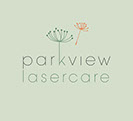pigment removal
how does the treatment work?
Light is released in short pulses that are readily absorbed by the high concentration of melanin found within pigmented lesions. The rapid absorption of light energy heats the melanin and causes the destruction of the melanin-rich cells.
how is the treatment carried out?
The light applicator is placed on the skin and a short pulse of light is released. The applicator is then moved to the neighbouring area and the process is repeated until the entire area is treated. During treatment protective eye wear will be provided.
am I suitable for treatment?
Most people are suitable for treatment except for very dark skinned or tanned individuals. However, large, dark, mottled or raised pigmentation cannot be treated and may need to be checked by a dermatologist. Large, dark moles should not be treated, nor should lesions covering a large part of the body. The pigmented marks that respond the best are superficial lesions such as those caused by sun damage (sun spots) and freckles.
how does the treatment feel?
Most patients describe the discomfort as mild and tolerable and no anaesthesia is required.
what should I expect after the treatment?
The treated area may feel warm and sensitive for the first few days post treatment. The sun spots or freckles may darken and appear more obvious in the first few days after treatment and then the excess melanin sheds and 'flakes' away.
are there any side effects?
The skin that surrounds the pigmented lesion may become red immediately after treatment. Most people experience no other side effects and the redness usually disappears within hours to a few days. Very rarely a small blister may form or the skin may become temporarily lighter or darker.
how long does treatment take?
The length of each treatment will depend on the type and size of lesion present, but a typical session will take 10 to 30 minutes.
how many treatments are necessary?
The number of treatments will depend on the type and size of the pigmented lesion but typically 1 to 3 sessions are required at 4 to 6 week intervals.
consultation procedure
Prior to treatment you must first undergo a consultation where details about your medical history are obtained in order to confirm suitability. Before proceeding you will be asked to sign a consent form and undergo a test patch.

